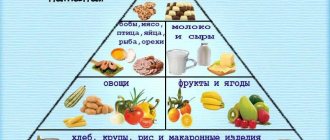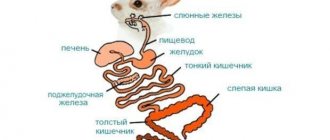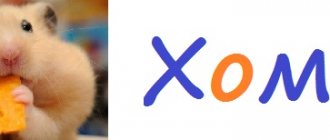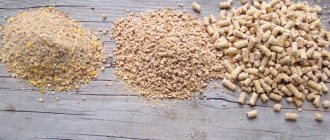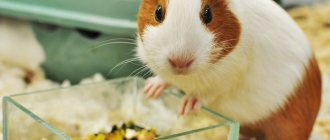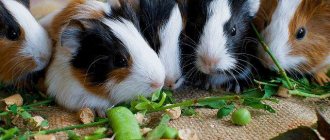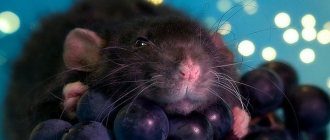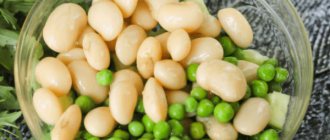Feeding
4559
no comments
Oats are the standard food for granivores. Due to its high energy value, it is widely used for fattening rabbits. On the other hand, the input rate is reduced for adult animals; they do not need excess energy; vitamins and minerals of succulent feed and feed additives are more important. Before feeding, oats are crushed, ground, steamed, and yeasted.
Photo. You can't do without grain when fattening rabbits
How much oats do you need to feed rabbits?
In the article compound feed, the optimal ratio of grain in the feed composition is indicated to be 65% (for productive) rabbits. We found the information in official sources. We believe that this is too much and that 30-40% of grain feed is more appropriate. Foreign sources unanimously recommend 20-30% grain. Why such difference?
The fact is that each directory compiler works in different conditions. One in a hot climate, the other in a cold climate. One grain is better eaten by rabbits, while the other half goes to waste. One has a complete feed with grass meal, the other just grain. The result is different numbers.
In this regard, it is better to set the norms for introducing grain into the daily fattening ration yourself. It is better to do this based on the results of reweighing.
Contraindications and possible harm
Oats are a healthy and easily digestible food, but they can also be detrimental to your health if not prepared correctly or if given in too large quantities. Grain contains 8% fat and a lot of protein, so its excess will lead to obesity if the diet is incorrectly calculated. In summer, the amount of grain feed should be reduced, focusing on greens, grass and juicy root vegetables.
In winter, when it’s cold, rabbits’ need for high-calorie food increases, so the proportion of oats in their food needs to be increased.
Small rabbits are not fed oats or other grains until they are a month old. Crushed and steamed food is given to animals older than 1-2 months, 1-2 tablespoons as part of the mash. Rabbits older than 4 months can receive yeasted oats in small quantities.
When feeding, it is necessary to pay attention to the behavior of the animals and their state of health. They may react differently to the product. If bloating and diarrhea appear, this means that the rabbits are fed too much oats or the type of oat processing is not suitable for these animals. With a properly formulated diet, feeding oats is beneficial. The animals look great, they are vigorous, strong, with shiny fur and excellent health.
Feed value of oats for rabbits
Oats are a high-energy grain feed. 100 grams of medium quality oats contain 350-360 kcal of energy. The amount of vegetable protein in 100 grams of food is 10-12 grams, fast energy carbohydrates 64.0-66.0 grams, fat 6.0-6.5 grams. Oats contain a full range of useful substances for rabbits. Water-soluble vitamins (thiamine, riboflavin, pyridoxine, biotin, pantothenic, nicotinic and folic acids). Fat-soluble vitamins (tocopherol, phylloquinone, and beta-carotene). The mineral composition of oats depends on the region where it was cultivated. However, in general, all the macro- and microelements necessary for health are contained in this grain.
Useful in nutrition
Monitor the condition of the feeder. Food should not stagnate in it. Clean out and put away old foods regularly as they can cause digestive upset. Do not allow food that shows signs of spoilage or dirt to enter the cage. There should always be fresh water in the drinking bowl, which is replaced every day.
Make sure the animals have something to grind their teeth with. To do this, you can put regular tree branches or solid food.
Compound feed will never replace greens, vegetables and grains. It simply does not contain all the vitamins necessary for life. After some time, vitamin deficiency may occur. Feed properly, include different foods in your diet and alternate them regularly. Try to provide as complete nutrition as possible.
When choosing oats for rabbits, make sure they are dry and free of mold. It may cause digestive upset. If you continue to feed spoiled grain, this will lead to serious poisoning and even death.
Never choose just one food for your animal. Make tops and salads from a variety of vegetables and herbs available to you. By providing rabbits with proper and complete nutrition, they will grow up healthy and active.
- Author: Maria Sukhorukikh
Rate this article:
- 5
- 4
- 3
- 2
- 1
(0 votes, average: 0 out of 5)
Share with your friends!
Can rabbits be given oatmeal?
Oatmeal or rolled oats. Is it possible to give rolled oats to rabbits? It is used as food for people. Prepared by flattening and additional processing for quick cooking. Rabbits benefit from flattened grain. Hercules can be given to rabbits during the fattening period from one to the seventh or eighth month. It is optimal to give rolled oats dry or slightly steamed in hot water. Introduce gradually into the diet. The only limiting factor is the price of oatmeal. A pack of rolled oats of 500 grams costs in retail at 2021 prices from 70 to 130 rubles.
Methods for preparing grain feed
Different types of grain processing improve its beneficial properties and taste, and increase its calorie content. To prepare the feed, use only clean containers and make sure that the processed grain does not spoil.
Steaming
The grains are steamed using boiling water, without cooking. Pour the washed grain into a bucket, add 1 tbsp. l. salt, pour boiling water, mix and leave for 5 hours. The grain is poured taking into account the increase in its mass after steaming. This method of preparing cereals replaces their crushing.
Yeasting
Preparing feed using the yeast method increases the appetite and absorption of feed in rabbits.
Preparation:
- The grain is crushed.
- The resulting grain flour is poured with warm water in a ratio of 1:2.
- Baker's yeast is diluted in warm water at the rate of 20-30 g per 2 liters of water.
- The diluted yeast is mixed with the flour mixture and placed in a warm place for 8 hours.
- During infusion, the yeast mass is stirred several times.
The grain is prepared in portions using the yeast method so that the rabbit can eat it within a few hours. Soured food is detrimental to the animal, as is overeating.
Yeast feed is given to rabbits for 4-5 days, then they take a break for 2-3 days and switch to another type of feed. This article will tell you more about what you can feed rabbits and what you should avoid in their diet.
See also: Which vitamins are best for rabbits?
Germination
Sprouted grain has a higher vitamin content than dry grain. The amino acid content in sprouts increases the absorption of protein, which determines muscle mass gain. The germination method is used for grain crops that require grinding, such as barley.
Sprout the grain until a small sprout or a few centimeters of green part appears. Longer germination is not recommended due to loss of vitamin value. A small amount of grain should be prepared in this way to avoid rotting and mold formation.
Cereals are soaked in buckets or other containers, left overnight in a warm place. The next day, the swollen grain can be fed or left to germinate for several days. For germination, the grain is laid out on baking sheets, covered with a damp, clean cloth. To prevent the fabric from drying out, it is sprayed with warm water several times a day.
Sprouted grains cannot be ground or chopped with knives - when they interact with metal, they enter into a chemical reaction, during which they lose useful substances. To prevent the vitamins from disappearing from the sprouted grain, it should not be subjected to heat treatment.
Wheat germ is a treat for rabbits. Animals eat vitamin sprouts with great eagerness, but overfeeding them is not beneficial, so the supply of this type of food should be regulated.
Due to its high nutritional value, sprouted food is often used during the planning period, before birth, and offered to nursing rabbits.
Grains according to the Zolotukhin method
N.I. Zolotukhin is the author of methods for keeping rabbits, who with his experience has proven the effectiveness of cereal feeding. The peculiarities of the zoologist's method are the use of dry and soaked grain in the diet for different periods of the life of rabbits:
- up to 4 months of age, rabbits are given pre-steamed oats;
- from 4 months of age, crushed oats and corn are gradually added;
- from the age of 6 months, males are fed a mixture of oats, barley and corn; females are given oats at normal times, and during pregnancy, soaked feed is added to the diet to increase nutritional value.
Why doesn't the rabbit eat oats?
If prepared correctly before feeding, it is well eaten by rabbits. Let us highlight two reasons (false and real).
- If you feed whole grains, the rabbit will shell the grains on its own. It seems that the rabbits do not eat, in fact the grain is eaten, only the husk remains. In short, if the rabbit does not look hungry, close this question.
- Do not eat moldy grain. It is not the mold that is dangerous, but its toxins. Toxins impart an unpleasant bitter taste to the grain. They cannot be destroyed by boiling. Sometimes the grain appears normal.
Adding feed sorbents reduces the risk of feed, but does not improve the taste. The most well-known mycotoxins are zearalenone, aflatoxin and their derivatives. Mycotoxins cause food refusal, in small quantities - infertility in rabbits, reduce the level of immunity, and sometimes cause death.
Mycotoxins are the main danger of grain feed, the cause of subclinical toxicosis in rabbits
It is difficult to exclude damage to oats by toxins, because they are metabolic products of microscopic fungi. The simplest diagnostic method is organoleptic. The taste and smell are bitter. Usually moist, rotten grain is affected by mycotoxins.
How to feed?
For rabbits, wheat is an integral part of proper nutrition. Pets eat raw, steamed and sprouted grains. The owner must select the appropriate feeding method, based on the age and sex of the animal.
Raw
30% of raw wheat is mixed with feed and other grain crops. For lactating and pregnant rabbits, as well as pets that are gaining weight, the specified rate is increased.
Young rabbits have a digestive system that is not yet strong enough, so wheat is introduced into complementary foods gradually. During this period, it is better to feed crushed or bran grains, mixing them with grass and vegetables. Potatoes are ideal among vegetable products.
Be sure to read:
How and what to feed small rabbits per week, 2 weeks, 20 days, 1 month without a rabbit
Steamed
The rabbit's body absorbs steamed whole or crushed wheat well.
To prepare the feed you need:
- 1 kg of grain;
- 2 liters of hot water;
- 1 tbsp. l. salt.
The ingredients are mixed and covered with a lid. After 5 hours, the mixture is ready for use.
For this purpose, the wheat yeast method is used. 2% baker's yeast is added to the finished mixture. The preparation is thoroughly mixed and infused for 6-7 hours. The food is suitable for gaining weight in rabbits for meat.
Sprouted
Wheat sprouts contain many useful substances that improve the appearance, functioning of the body, and increase the rabbit’s immunity.
Sprouted wheat must be added to the food of females and males before mating, so that their desire for procreation awakens, and then they get strong and healthy offspring.
Steaming
The steaming procedure makes the food sweet and soft, its digestion improves, it is absorbed more actively, and the little ears will eat it with appetite. To do this, grain of one type or a mixture of cereals is poured into a bucket, but not to the brim. Leave 10 cm in the expectation that the volume of the contents will increase after steaming. Pour boiling water, add tbsp. l. salt, mix the composition and cover the bucket with a lid. In 5 hours the “dish” will be ready.
It is not advisable to give rice and boiled porridge to rabbits. Fresh white bread is not recommended; you should not feed it with baked goods and products made from rye flour.
Products increase the formation of mucus in the intestines and cause fermentation processes, which leads to bloating.
Grain feeders
Proper grain feeder is very important in rabbit farming. You can purchase it at a specialty store or make it yourself. In order not to make a mistake in choosing a feeder for your pet, you need to make sure that it meets the following requirements:
- a daily portion of the grain mixture should be placed in the feeder;
- the feeder should easily fit into the animal’s cage and be removed from it with the same ease;
- the food container must be made of environmentally friendly materials, and its design must not injure the animal;
- The design of the feeder must have limiters that prevent the scattering of feed.
Rabbit feeder
Only the breeder decides whether it is better to feed rabbits with grain or mixed feed. Experience, knowledge and practice will help you find the right answer to this important question.
Remains of crops
Is it possible to give tops to rabbits? Many people have heard that raw materials are used as a basis for silage, so they try to use everything. However, not all crops are equally beneficial for eared animals.
Do not feed your pets the upper parts of nightshade plants. Tomato and eggplant tops, as well as sprigs of pepper and potatoes are prohibited from being used in any form: they contain a concentrated dangerous toxic substance that can kill not only a weak rabbit, but also an adult.
Sunflower cake is an excellent source of vitamin E, which is why it has long been used in animal husbandry. The plant contains a lot of fat and can cause obesity. To avoid problems, you need to accurately calculate how much product you need per head.
Green pea skins can be included in the menu of adults. It is given along with hay in winter, supplementing the poor seasonal diet. To create silage, the remains of beet tops are often used. Radishes (greens) are mowed, dried and fed to pets. Don't get carried away with dried sunflower remains.
Prohibited Products
Mass mortality of livestock is the result of the farmer’s inattention and careless experiments. To avoid mistakes, you need to know the enemy by sight. What should not be in the diet?
Red cabbage is a prohibited food. It disrupts the microflora of the stomach, causing irreversible consequences. If species with white leaves can be boiled or scalded with boiling water, then this vegetable retains its properties for a long time.
Like tomato tops, potato tops should not be fed. For rabbits and adults, green “fruits” and young tubers remain poisonous. The product is dangerous both raw and boiled.
Celery should not be given without additives. Diluted with salad and other vegetables, it will bring more benefits and will not harm. Dill and parsley are included in the diet of lactating females; other individuals do not need it.
Seeds and pits should not fall into the feeder. Do not feed rhubarb and fresh garlic. Don't get carried away with exotic crops like banana or mango.
Not all plants are equally beneficial for eared livestock. If you know which fruits and vegetables you can eat and which you can’t, you can easily avoid many problems. Our recommendations will help you understand the correct keeping of rabbits.
0 4477 Article rating
Rabbit breeders, both beginners and experienced ones, should know everything about the nutrition of eared rabbits. For example, what vegetables can you feed rabbits, what fruits can you give them, and what should you try to exclude from your pets’ diet.
What vegetables and fruits can you feed your rabbit?
Pearl barley
This grain is especially useful for obtaining high quality wool. Pearl barley contains the following beneficial substances:
- Vitamins A, E, K, as well as group B.
- Macroelements: magnesium, potassium, sodium, phosphorus, calcium.
- Microelements: zinc, iron, manganese, copper, selenium.
You can prepare mash based on pearl barley, which will account for almost half.
Adults are given 80 grams per day, during the period when mating is planned - 95 grams, and females during pregnancy - 85 grams. Pearl barley is part of a rabbit food mixture that can be purchased at pet stores.
Oats: composition, types and varieties, their use in food and livestock
This annual plant is widely used in agriculture. Oats have a short growing season (up to 4 months), easily tolerate light frosts, and are unpretentious to climate and soil. For food and as livestock feed, 76 varieties of oats are grown, which include cultivated and wild oats. The most common are sowing and Byzantine.
Whole oats are considered the best food for horses. For sheep, poultry, laying hens, ducks, geese and other pets, this cereal is a valuable nutritional supplement. It contains:
- Over 40% starch.
- Quarter fiber.
- About 20% protein
- More than 10% fat.
- About 1% protein.
Feed and seed oats (photo 1) are long, thin grains, slightly pear-shaped, light in color, without a musty odor.
The size of the grain, depending on the variety, ranges from 8 to 16 mm in length and has a characteristic deep longitudinal groove
Feed oats can be not only whole, but also crushed. In addition, it is divided into spring and winter. If you do not subject it to special processing before feeding (for example, sprout or flatten it), then the animals will better digest crushed oats.
